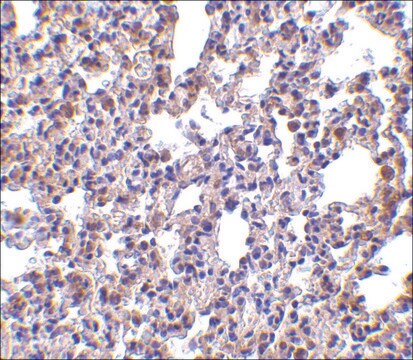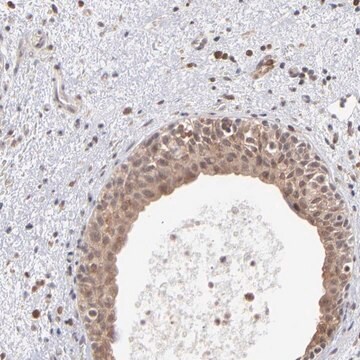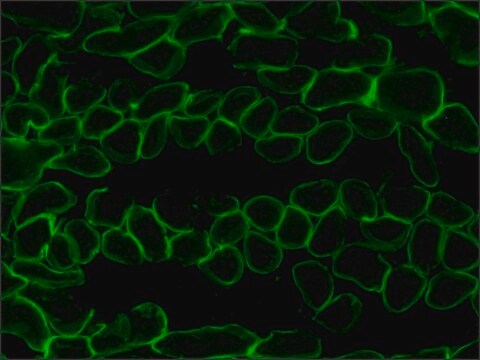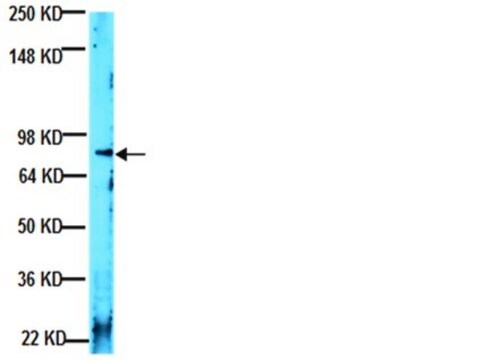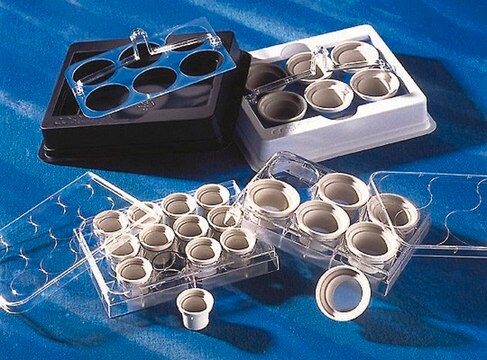HTS216RTA
Ready-to-Assay α 1D Adrenergic Family Receptor Frozen Cells
Human
Iniciar sesiónpara Ver la Fijación de precios por contrato y de la organización
About This Item
Código UNSPSC:
41106514
eCl@ss:
32011203
NACRES:
NA.84
Productos recomendados
product name
Ready-to-Assay α 1D Adrenergic Family Receptor Frozen Cells, Human alpha1D GPCR frozen cells for Calcium Flux FLIPR Assays.
origen biológico
human
Nivel de calidad
fabricante / nombre comercial
Ready-to-Assay
técnicas
calcium flux assay: suitable
Nº de acceso NCBI
método de detección
fluorometric
Condiciones de envío
dry ice
Descripción general
Millipore’s Ready-to-Assay GPCR frozen cells are designed for simple, rapid calcium assays with no requirement for intensive cell culturing. Millipore has optimized the freezing conditions to provide cells with high viability and functionality post-thaw. The user simply thaws the cells and resuspends them in media, dispenses cell suspension into assay plates and, following over night recovery, assays for calcium response.
The endogenous catecholamines epinephrine and norepinephrine have profound effects on smooth muscle activity, cardiac function, carbohydrate and fat metabolism, hormone secretion, neurotransmitter release, and central nervous system actions. These activities are mediated by GPCRs belonging to two subfamilies, the α- and β-adrenoceptors (Bylund et al., 1994). The three members of the α1 subclass of adrenoceptors, α1A, α1B and α1D, couple to Gq, and promote contraction of vascular and urinary tract smooth muscle, relaxation of intestinal smooth muscle, increased contractile force in the heart, and glycogenolysis and gluconeogenesis in the liver. The different subtypes have overlapping distributions and variably contribute to these effects depending on species and tissue. The α1D adrenergic receptor mediates smooth muscle contraction in several tissues. In the vasculature, activation of α1D increases blood pressure (Tanoue et al., 2002; Hosoda et al., 2005). In the urinary tract, α1D promotes bladder contraction. Antagonists of α1 receptors are used to treat bladder outlet obstruction, and this effect is thought to be mediated by α1D (Chen et al., 2005). The α1D adrenergic receptor has a relatively long N-terminal extracellular domain, and truncation of this domain has been shown to increase expression of the receptor at the cell surface (Pupo et al., 2003). Millipore’s cloned human α1D -expressing cell line contains a version of α1D lacking residues 2-79. The cell line is made in the Chem-1 host, which supports high levels of recombinant α1D expression on the cell surface and contains high levels of the promiscuous G protein to couple the receptor to the calcium signaling pathway. Thus, the cell line is an ideal tool for screening for agonists and antagonists at α1D.
The endogenous catecholamines epinephrine and norepinephrine have profound effects on smooth muscle activity, cardiac function, carbohydrate and fat metabolism, hormone secretion, neurotransmitter release, and central nervous system actions. These activities are mediated by GPCRs belonging to two subfamilies, the α- and β-adrenoceptors (Bylund et al., 1994). The three members of the α1 subclass of adrenoceptors, α1A, α1B and α1D, couple to Gq, and promote contraction of vascular and urinary tract smooth muscle, relaxation of intestinal smooth muscle, increased contractile force in the heart, and glycogenolysis and gluconeogenesis in the liver. The different subtypes have overlapping distributions and variably contribute to these effects depending on species and tissue. The α1D adrenergic receptor mediates smooth muscle contraction in several tissues. In the vasculature, activation of α1D increases blood pressure (Tanoue et al., 2002; Hosoda et al., 2005). In the urinary tract, α1D promotes bladder contraction. Antagonists of α1 receptors are used to treat bladder outlet obstruction, and this effect is thought to be mediated by α1D (Chen et al., 2005). The α1D adrenergic receptor has a relatively long N-terminal extracellular domain, and truncation of this domain has been shown to increase expression of the receptor at the cell surface (Pupo et al., 2003). Millipore’s cloned human α1D -expressing cell line contains a version of α1D lacking residues 2-79. The cell line is made in the Chem-1 host, which supports high levels of recombinant α1D expression on the cell surface and contains high levels of the promiscuous G protein to couple the receptor to the calcium signaling pathway. Thus, the cell line is an ideal tool for screening for agonists and antagonists at α1D.
Descripción línea celular
Chem-1
GPCR Cell Lines
Aplicación
Human alpha1D GPCR frozen cells for Calcium Flux FLIPR Assays.
Acciones bioquímicas o fisiológicas
GPCR Class: A
Protein Target: alpha1D
Target Sub-Family: Adrenergic
Componentes
Pack contains 2 vials of mycoplasma-free cells, 1 ml per vial.
Fifty (50) mL of Media Component.
Fifty (50) mL of Media Component.
Cláusula de descargo de responsabilidad
This product contains genetically modified organisms (GMO). Within the EU GMOs are regulated by Directives 2001/18/EC and 2009/41/EC of the European Parliament and of the Council and their national implementation in the member States respectively. This legislation obliges {HCompany} to request certain information about you and the establishment where the GMOs are being handled. Click here for Enduser Declaration (EUD) Form.
Unless otherwise stated in our catalog or other company documentation accompanying the product(s), our products are intended for research use only and are not to be used for any other purpose, which includes but is not limited to, unauthorized commercial uses, in vitro diagnostic uses, ex vivo or in vivo therapeutic uses or any type of consumption or application to humans or animals.
Unless otherwise stated in our catalog or other company documentation accompanying the product(s), our products are intended for research use only and are not to be used for any other purpose, which includes but is not limited to, unauthorized commercial uses, in vitro diagnostic uses, ex vivo or in vivo therapeutic uses or any type of consumption or application to humans or animals.
Código de clase de almacenamiento
10 - Combustible liquids
Clase de riesgo para el agua (WGK)
WGK 1
Punto de inflamabilidad (°F)
Not applicable
Punto de inflamabilidad (°C)
Not applicable
Certificados de análisis (COA)
Busque Certificados de análisis (COA) introduciendo el número de lote del producto. Los números de lote se encuentran en la etiqueta del producto después de las palabras «Lot» o «Batch»
¿Ya tiene este producto?
Encuentre la documentación para los productos que ha comprado recientemente en la Biblioteca de documentos.
Nuestro equipo de científicos tiene experiencia en todas las áreas de investigación: Ciencias de la vida, Ciencia de los materiales, Síntesis química, Cromatografía, Analítica y muchas otras.
Póngase en contacto con el Servicio técnico
